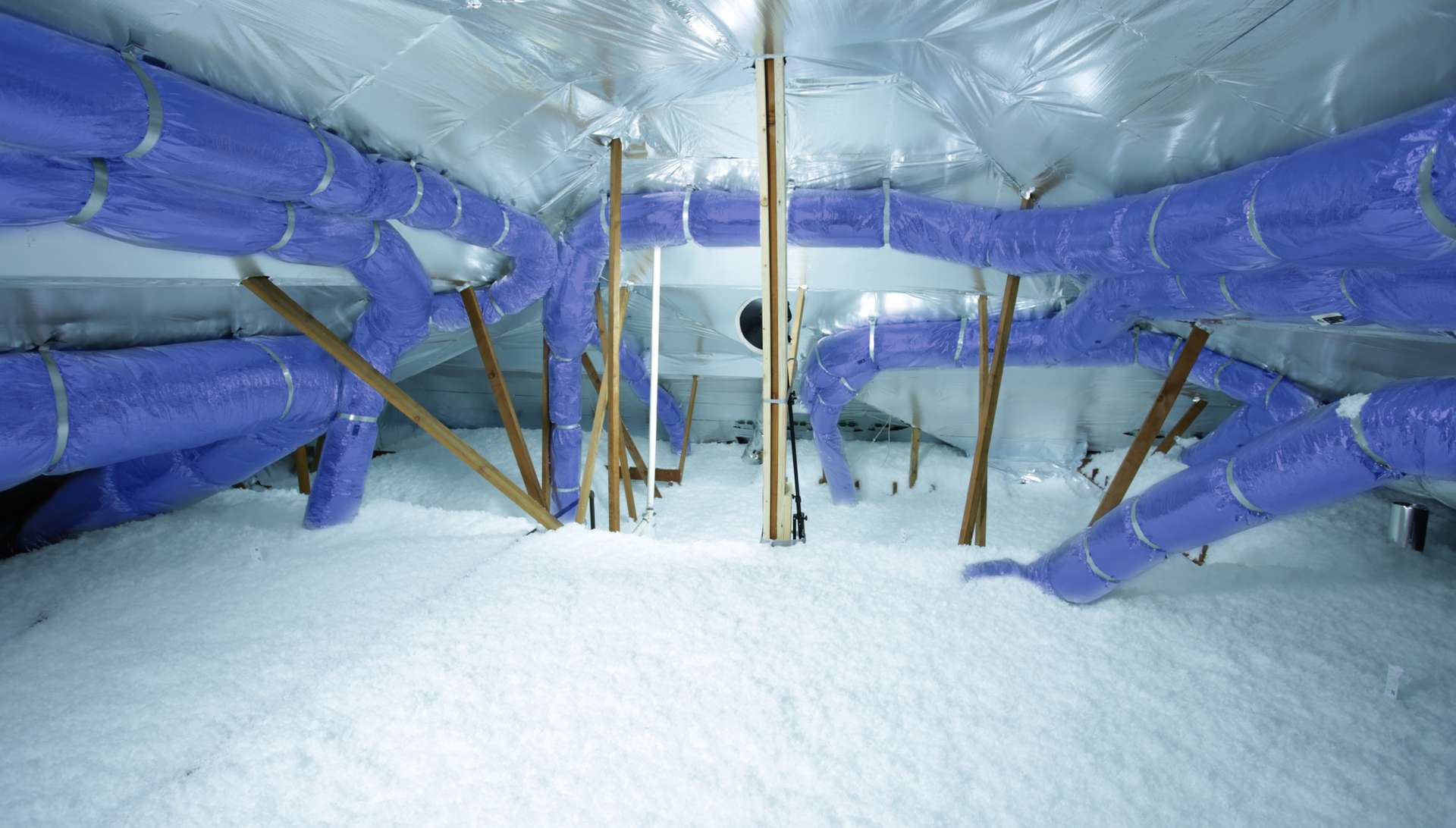Dallas: (972) 548-0088
Does My Attic Have Enough Insulation?

Estimated reading time: 4 minutes
Attics are perhaps the hardest place in your home to temperature-regulate. Typically, your chilly attic – and your cold home – come from improper insulation. If your attic’s insulation is insufficient, you will lose heat from this upper floor in the colder months, which translates to increased heating costs and energy usage.
Table of contents
Why is your attic so hard to heat?
The U.S. Department of Energy (DOE) suggests that attics should have more insulation than most do. Specifically, 90 percent of homes across the country are under-insulated. Too-thin insulation is a preventable cause of heat leakage during the winter months, and if you do insulate properly, you’ll see an average heating bill savings of 10 to 50 percent each cold season.
You don’t have to pay exorbitant heating costs or suffer through a chilly attic anymore. Here, we’ll answer all your questions so you can make plans for properly insulating your attic.
Insulation is measured using an R-value, which essentially considers the thickness of your insulation. Your recommended R-value will vary based on your climate; for instance, homes here in Texas need less insulation than homes in the North. Your home’s age also plays a role in how much insulation you’ll require.
In order to tell how much insulation your attic currently has, you’ll only need a ruler. Measure the height of your insulation from the floor of your attic to where the insulation stops. Older homes typically were insulated with four- to five inches of insulation, or R-15, which was much far too little insulation for preserving heat.
Even if the space between your joists is completely filled, you still aren’t properly insulating your home. Most joists are six to seven inches tall, and if they are completely filled with material, they are insulated at R-21. However, the DOE recommends that attics in Southern homes be insulated with 13 to 14 inches, or R-38, of insulation at minimum. Northern homes should have attics with 16 to 18 inches of insulation or R-49.
If your home isn’t insulated to the recommended thickness, you likely want to consider adding more insulation.
What are the best insulation methods?
Loose-fill insulation
Loose-fill insulation is small pieces of insulation that can be blown into spaces in your attic. The benefits of loose-fill are that you can create layers with it that improve your attic’s heat retention. Another benefit of loose fill is that fills gaps, joints, corners, and other spaces that larger-size insulation cannot.
Batts insulation
Batts insulation is designed for homes with standard joist spacing. However, this type of insulation is not appropriate for many types of projects. If your attic has obstructions, you may not be able to install batts; batts insulation also doesn’t offer a vapor barrier. Batts are easy to find at home improvement stores but don’t insulate as well as loose fill.
Spray foam
Spray foam insulates attics well but is both expensive and problematic. When spray foam is installed properly, you will have zero heat loss in your attic, as well as a moisture barrier. However, spray foam is the most expensive option of the three and the trickiest to install. In order for your spray foam to work, your installer must be an expert in using a spray foam gun. Spray foam installers must also off-gas toxic poisons, a process that could worry some homeowners.
What type of material should I choose for my insulation?
Fiberglass
Fiberglass is recycled glass or sand that has been formed into a fiber. Fiberglass can create layers of insulation to reach R-value recommendations of up to R-70. It also fits easily into small spaces or atypical spaces because of its lightweight.
Cellulose
Cellulose insulation is made from small pieces of recycled paper. The paper is then treated with boric acid so it protects from insects. Though cellulose is a fairly strong insulator, it creates considerable dust, so much that professionals have to use a wet-spray process to control it. Cellulose can also decay or settle, meaning that you need to change it out regularly.
Mineral Wool
An older type of insulation, mineral wool is becoming popular again as an insulation material. Made from rock or recycled materials from blast furnaces, mineral wool is also fire resistant. However, mineral wool is a pricey alternative to other materials that may work just as well.
Cotton
Another expensive alternative is cotton, which is made from recycled denim. Though fans of this material praise its soundproofing properties, it is costlier than other materials.
Can I DIY my attic insulation?
You can certainly measure your current insulation and check to see how much insulation is recommended in your area. After that, however, insulation is a task best left to professionals. Some DIYers buy bags of material at the home improvement store, and then discover that it nowhere near the amount required. Insulating your attic also requires complex machines to effectively reach the nooks and crannies, and unless you’re already familiar with these tools, you may use them incorrectly.
